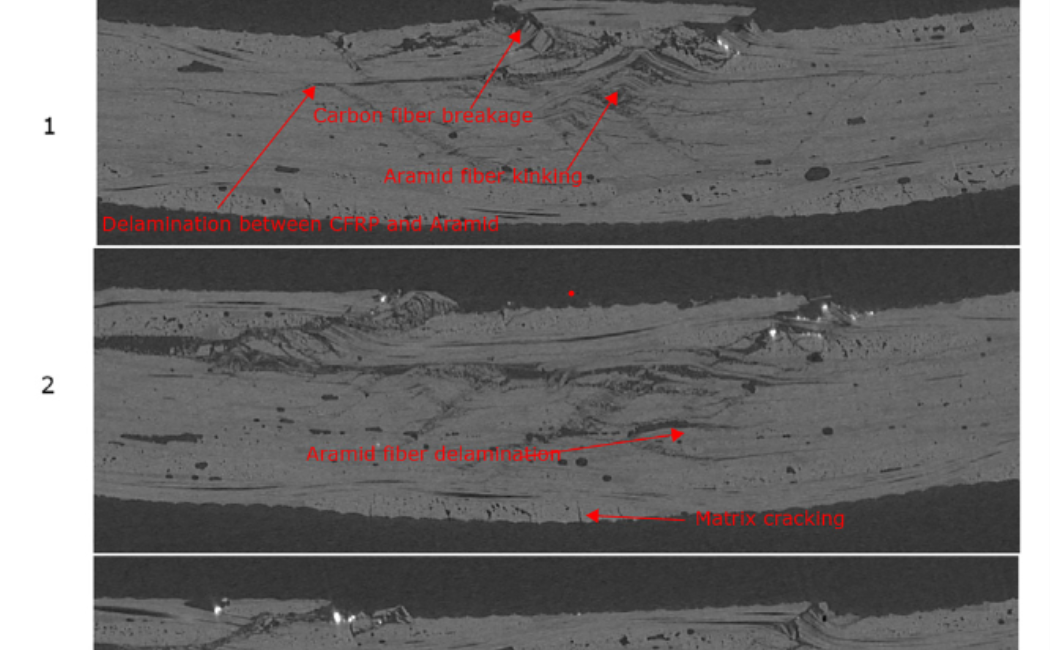


01 May, 2020
Abstract
Hybrid polymeric composites are currently used in aerospace structures due to their specific strength and stiffness as well as larger design space. This paper presents an experimental study on residual flexural strength of impacted Carbon-aramid/Epoxy hybrid composite laminates. Specimens are designed in a sandwich form in which plies of aramid/epoxy represent the core and carbon/epoxy plies play the role of face sheets. This design is expected to take advantage of the high energy absorption capabilities of aramid/epoxy composites. We pre-damage such composites by performing low-velocity impact at different energy levels. Three-point bending tests then are used to measure the residual flexural strength for the impacted specimens. The damage sequence during three-point bending is monitored using a camera and, later on, with computed tomography. The results show that, unlike the all-carbon/epoxy laminates, the carbon fiber plies in the lower part of the laminate (non-impacted face) are not fractured after either the impact test or the three-point bending test. The damage is locally concentrated at the impacted face and the upper part of the aramid plies core. As a result, the strength losses are smaller, as compared to available results in the literature for carbon/epoxy composites, glass/epoxy and carbon fibers with aluminium core laminates.
Damage toleranceFlexural testPost-impact strengthComputed tomographyHybrid carbon-aramid composite